Have you ever thought your Russian Blue was totally healthy but might be sick? It’s a myth that these beautiful cats with silver-blue furs and green eyes are always strong. Despite their looks and fun nature, Russian Blue Cats can get sick. It’s important to spot any illness early to avoid major problems.
Russian Blue Cats are known for being loyal, loving, and grooming themselves well. Even these perfect companions can face health issues. It’s vital to know what health problems your Russian Blue might have. Plus, getting regular vet check-ups means your cat stays happy and healthy.
By keeping an eye on how your cat acts and looks, you can find health issues early. Regular vet visits are also a key part of keeping your Russian Blue healthy. So, being alert and getting the right care can help your cat live a great, long life.
Key Takeaways
- Russian Blue Cats may appear sturdy but can suffer from breed-specific health issues.
- Regular veterinary check-ups are crucial for early detection of illnesses.
- Watch for subtle behavioral changes as signs of sickness.
- Understand the importance of tailored preventive care for your cat’s well-being.
- Stay informed about potential genetic predispositions.
Recognizing Illness in Russian Blue Cats
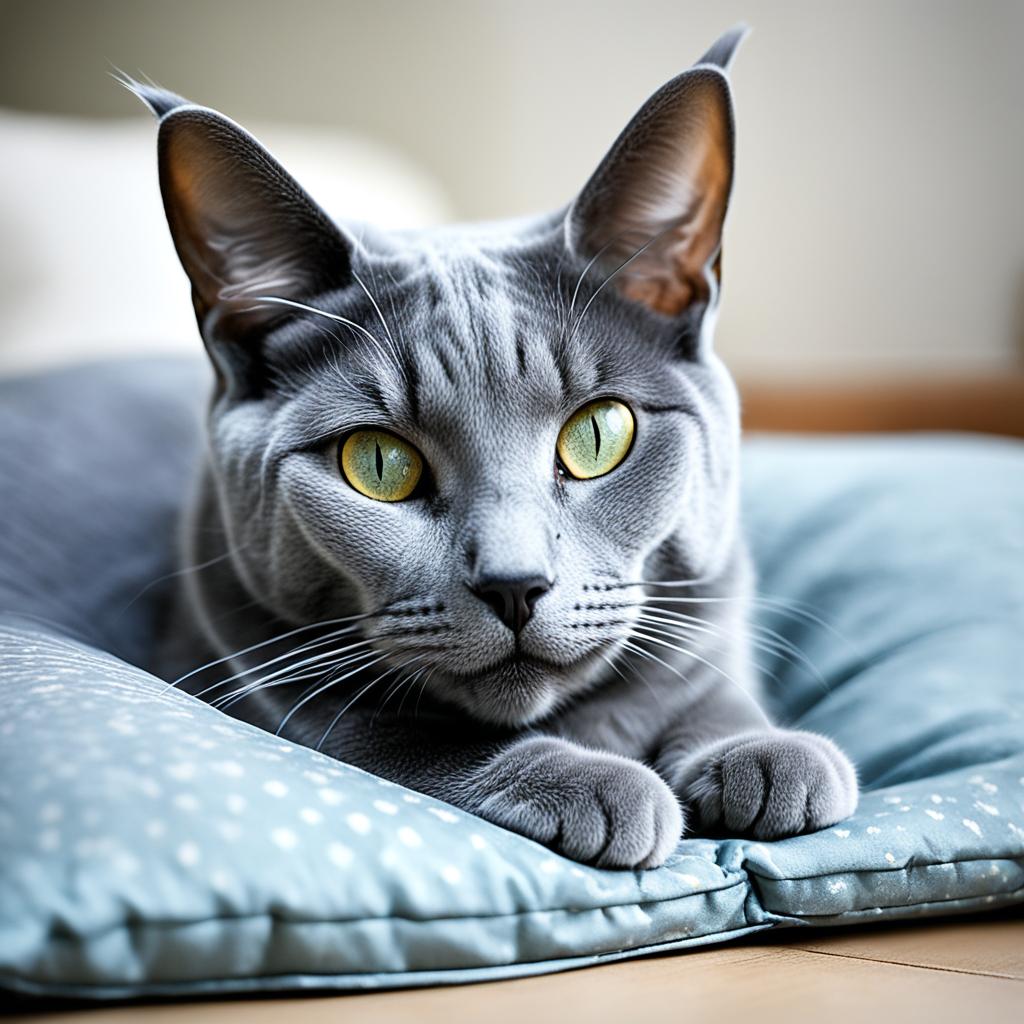
Is your Russian Blue Cat acting weird? They can be sneaky when they’re not feeling well. Watch how they act and if anything seems off.
Behavioral Changes
Changes in behavior are often the first clue. A normally friendly cat might start avoiding you. They might also jump at little noises or hide more. Changes in eating, play, and sounds they make could signal a problem.
Physical Symptoms
Look out for changes in weight or fur. If they stop grooming or suddenly get skinny, they might be unwell. It’s hard to tell because Russian Blues hide their pain well. Checkups with the vet are crucial.
Common Health Problems in Russian Blue Cats
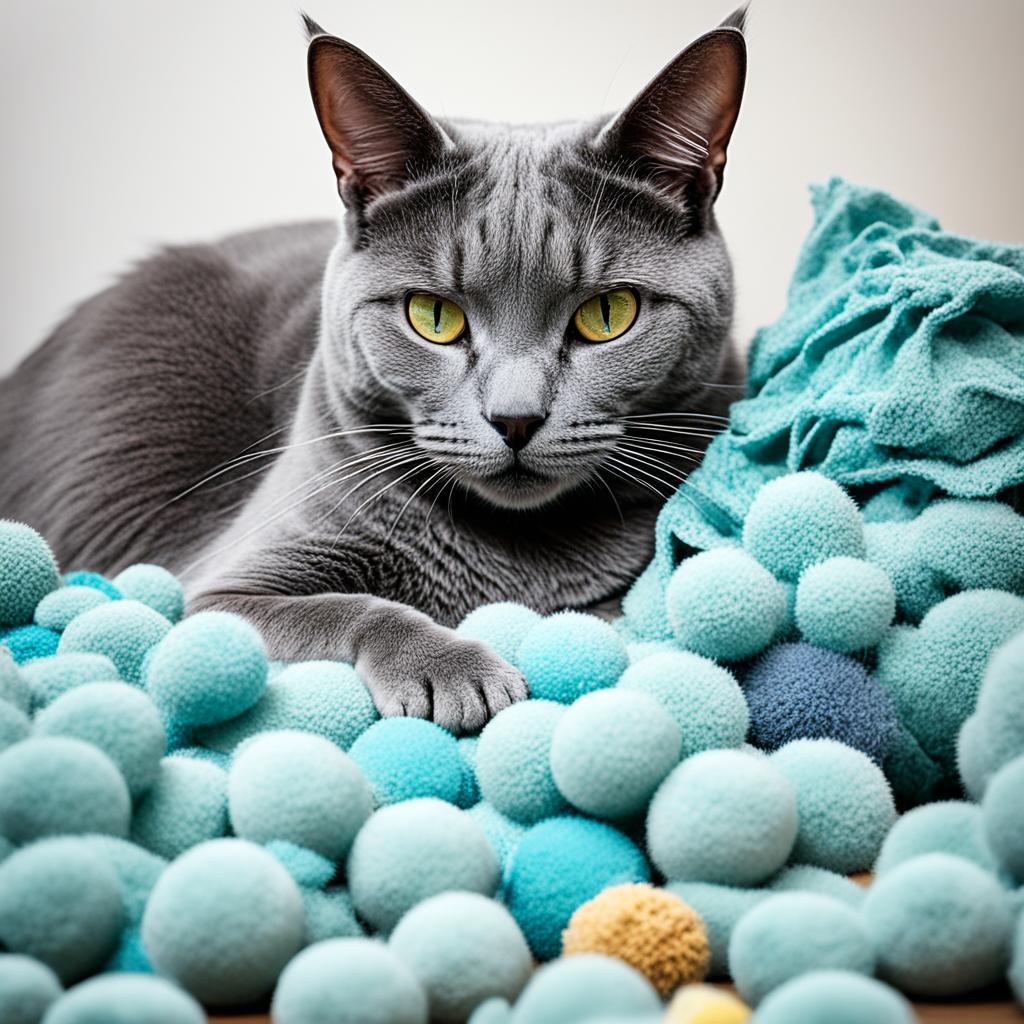
Russian Blue Cats are usually strong with a sleek look and loving personality. Still, they can face some health issues. These might include things like being overweight, having diabetes mellitus, and needing dental care. Knowing about these common health problems in Russian Blue cats helps catch issues early.
Too much weight can be a big problem if they’re not very active. It might cause diabetes and heart problems. Russian Blues can also get Hypertrophic Cardiomyopathy (HCM), which is a heart problem.
Looking after their teeth is important for Russian Blue Cats. They should see the vet regularly for dental check-ups. Keeping their teeth healthy helps keep the whole cat healthy.
It is essential to watch for polycystic kidney disease, a hereditary issue. It can cause serious kidney problems. Signs include not eating well, being tired, and drinking or peeing more than usual.
Russian Blues might also have eye problems like conjunctivitis, glaucoma, or cataracts. Checking their eyes often can catch these problems before they get worse. This helps keep your cat’s eyesight good.
Knowing what are the signs of a sick Russian Blue Cat is very important. Always checking their health and acting quickly if you notice something wrong can help them live a long, happy life.
Weight Management for a Healthy Russian Blue
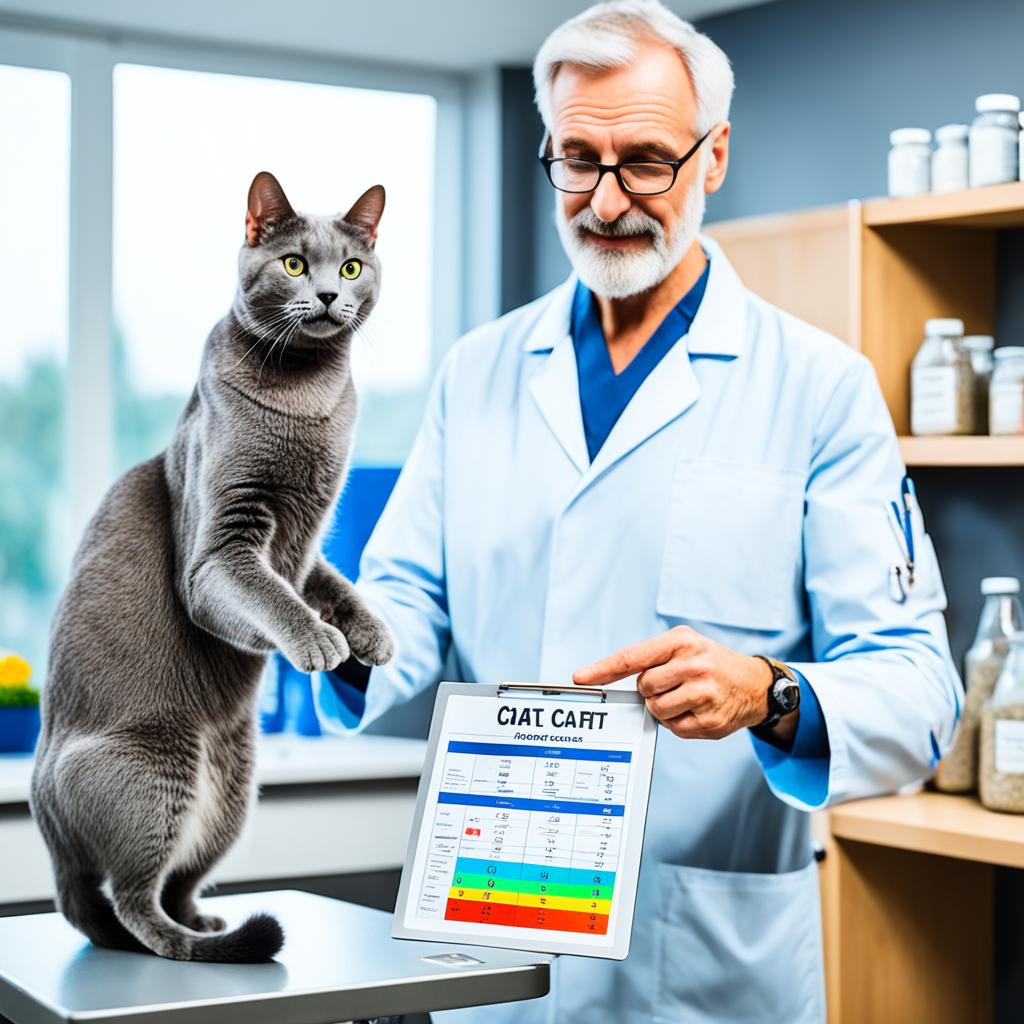
Your Russian Blue cat, though adorable, must keep a healthy weight. This is vital for a happy, long life. Russian Blues need careful feeding and enough playtime for good weight management. This keeps them healthy and joyful.
Risks of Obesity
Obesity is a big problem for our feline friends. Russian Blues face an even higher risk due to their nature. They might get diabetes, arthritis, move less, and live shorter. So, watching your cat’s weight is very important.
Preventing Obesity
To avoid obesity, your Russian Blue needs a balanced diet and to move a lot. Be careful not to give them too much food. Play with them every day and use food puzzles for some fun and exercise. Veterinarians can help make a special diet and workout plan for your cat. This will keep your Russian Blue lively and content.
Signs of Dental Disease in Russian Blue Cats
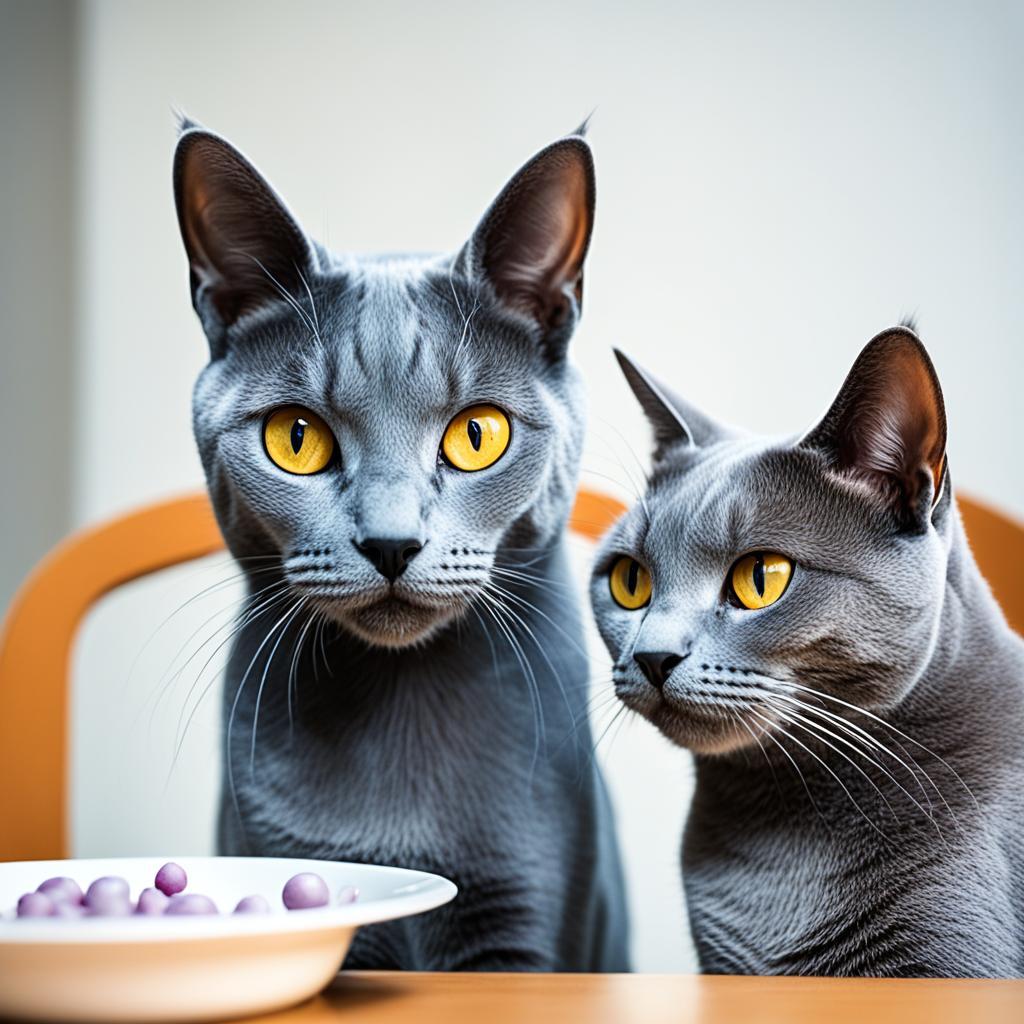
Dental health is key for Russian Blue Cats. Knowing the signs of dental problems saves them from pain.
Common Dental Problems
Russian Blue Cats often face gum issues and tartar. These come from hardening food residue. You might notice bad breath or they might find it hard to eat.
Preventive Care
Start preventive care early to avoid major dental issues. Brushing their teeth with the right toothpaste daily helps. So does visiting the vet for teeth checks and cleanings. Look for VOHC-approved dental goods.
This approach keeps your cat healthy and saves money on treatments later. Your Russian Blue’s happiness starts with a shiny smile.
What Are the Signs of a Sick Russian Blue Cat?
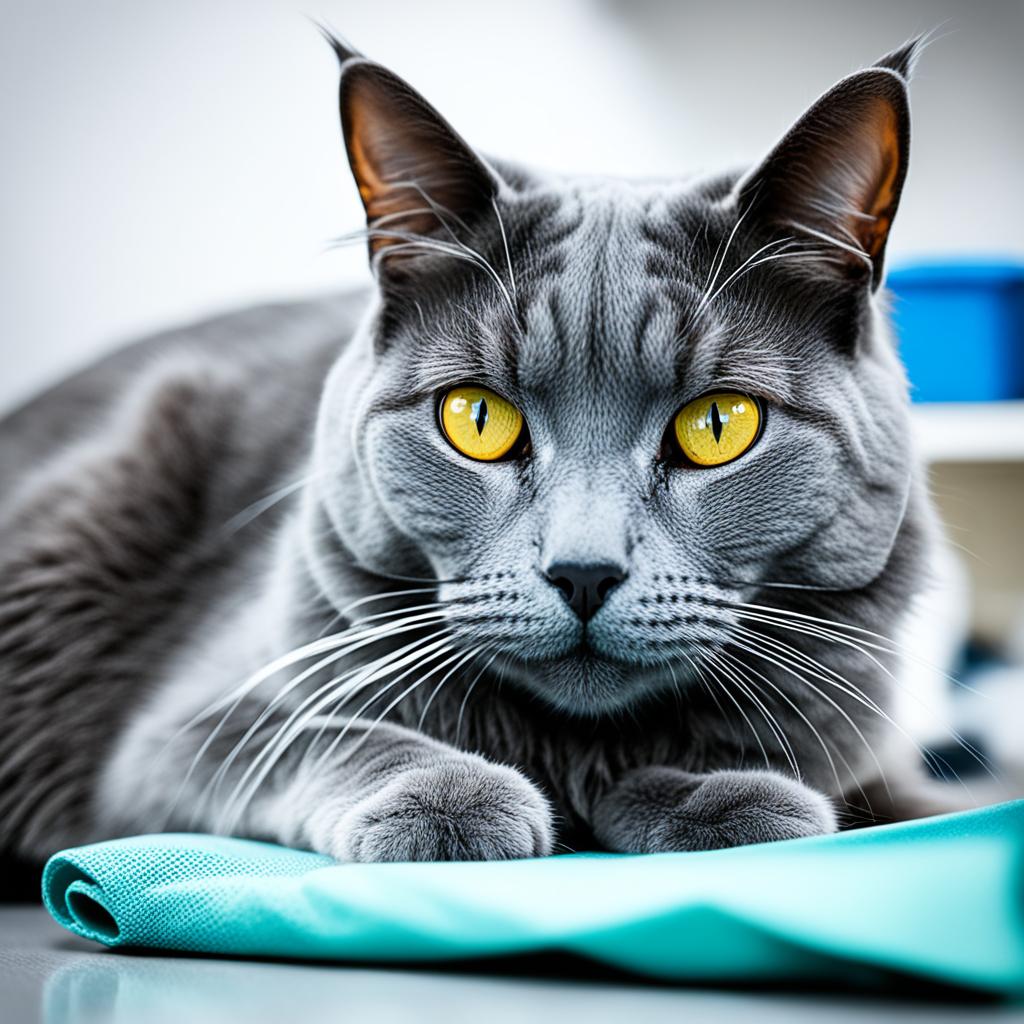
Spotting illness in Russian Blue Cats is like solving a mystery. Their signs might go unnoticed at first. Look out for changes in behavior to figure out if your cat isn’t feeling well. Things to watch are if your cat wants to be alone more, or if they seem too upset easily.
When your cat shows physical signs, it’s a clear warning. Vomiting, diarrhea, or coughing are not normal. Also, take note if they drink more water than usual or if they use the litter box differently. Any of these could mean they are sick and need to see a vet quickly.
Changes in weight could show something’s wrong, especially if they seem to move with less ease. Illness in these cats isn’t always obvious. It’s about noticing the small signs of unease.
| Symptom | Indicator | Action Required |
|---|---|---|
| Behavioral Changes | Reclusiveness, agitation | Immediate vet consultation |
| Physical Symptoms | Vomiting, diarrhea, coughing | Monitor & seek veterinary advice |
| Water & Urinary Habits | Increased consumption, urinary changes | Immediate vet visit |
| Weight Changes | Unexplained gain or loss | Consultation with a vet |
| Movement Issues | Difficulty moving | Prompt veterinary examination |
Staying alert and knowing the signs can help your cat stay healthy. With quick action, your elegant cat can keep looking and feeling great.
Symptoms of Diabetes Mellitus in Russian Blues
Diabetes Mellitus can impact your beloved Russian Blue, especially if they carry extra weight. It’s important to know the symptoms of this condition in cats. By watching their health closely, you can spot and handle the disease early.
Weight Loss and Increased Appetite
One symptom of Diabetes in Russian Blue Cats is losing weight while eating more. If your cat gets thinner but still eats a lot, it might be a warning sign. Their bodies can’t use glucose properly, which leads to them losing muscle weight.
Increased Thirst and Urination
Do you see your Russian Blue drinking a lot more water or using the litter box more often? These are typical signs of Diabetes Mellitus in cats. With sugar levels high, the kidneys strive to remove the excess sugar. This causes the cat to drink and urinate more. But, early detection and care, including diet changes and insulin, can help a lot.
Let’s break this down:
| Symptom | Description |
|---|---|
| Weight Loss | Notable decrease in weight despite increased food intake |
| Increased Appetite | Persistent hunger and increased food consumption |
| Increased Thirst | Frequent drinking, more than the usual amount of water |
| Frequent Urination | Multiple trips to the litter box, urinating more often |
Watching for these signs and talking with your vet is crucial for cat diabetes management. Using a blend of special diets, insulin, and checking blood sugar regularly, you can help your Russian Blue live well, even with Diabetes Mellitus.
Eye Issues in Russian Blue Cats
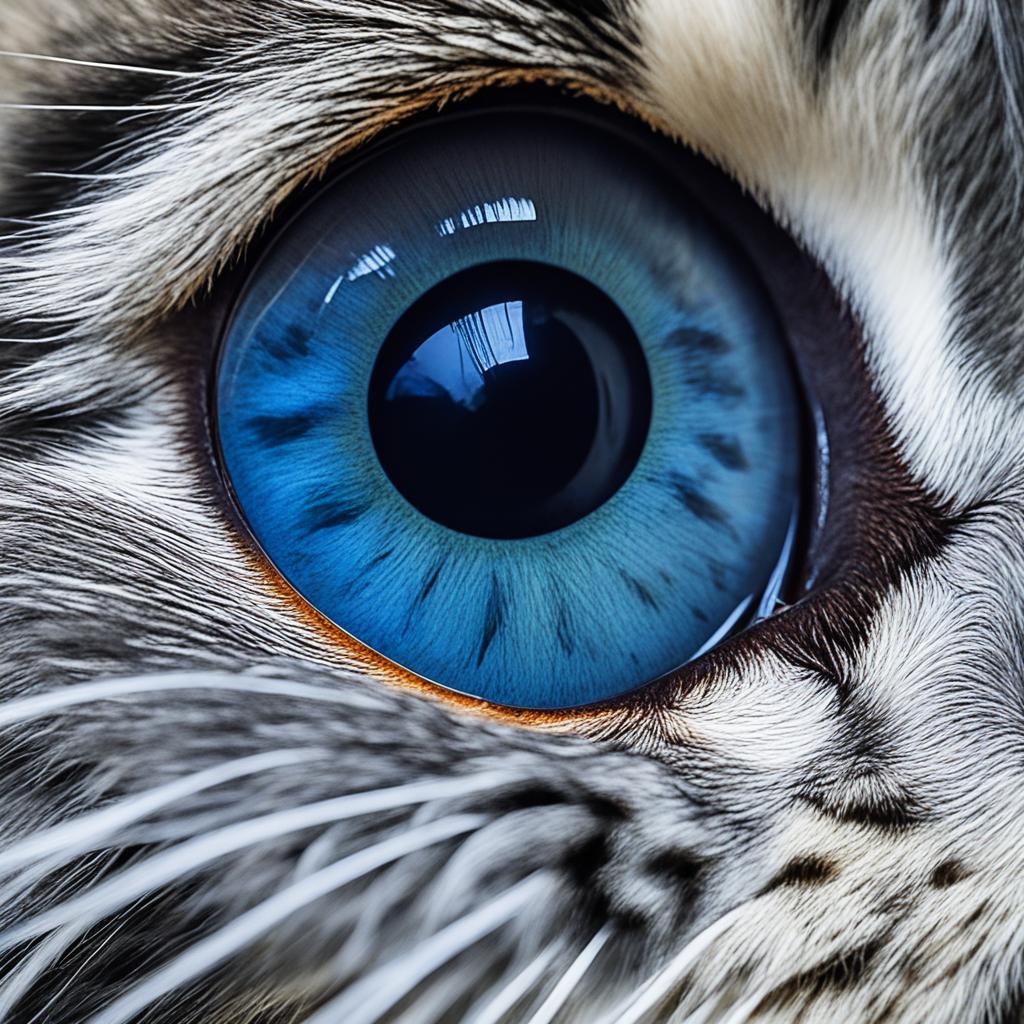
Russian Blue Cats often have eye problems. These may show as redness, discharge, and swelling around the eyes. Watching for signs like too much tearing, strange discharges, and acting differently is key.
Conjunctivitis in cats is not uncommon. It requires a visit to the vet for care. The cause may need antibiotics or antiviral medicine. Early care for eye issues is vital to stop them from getting worse.
Glaucoma and cataracts are also issues for this breed. Glaucoma raises eye pressure and cataracts make the eyes look cloudy. Progressive retinal atrophy can also occur, leading to vision loss over time. Regular vet visits are very important to catch and treat these problems early.
Below is a table that shows common eye problems and their signs:
| Eye Problem | Symptoms | Treatment |
|---|---|---|
| Conjunctivitis | Redness, discharge, swelling | Antibiotics, antiviral medication |
| Glaucoma | Increased eye pressure, pain | Medications to reduce pressure |
| Cataracts | Cloudy eyes | Surgery |
| Progressive Retinal Atrophy | Gradual vision loss | Currently untreatable, management |
Handling eye problems in Russian Blue Cats well means regular vet eye checks and following prescribed treatments closely. Keeping a close eye on your cat’s eye health can lead to a happy, healthy pet with good vision.
Dealing with Urinary Tract Diseases

Urinary Tract Diseases in cats are quite common, including in Russian Blue Cats. Being aware of Feline Lower Urinary Tract Disease (FLUTD) is key. This can help both you and your cat avoid a lot of pain. It’s crucial to spot early signs and take preventive steps.
Signs of FLUTD
It’s not hard to recognize FLUTD if you know what to look for. Cats with FLUTD may show:
- Urinating more than usual
- Seeming like they’re in pain when peeing
- Urine that has blood in it
- Going outside the litter box to pee
If your Russian Blue shows these signs, head to the vet quickly. Early diagnosis and treatment are crucial. FLUTD can get worse fast, so acting promptly is important.
Preventive Measures
You can help prevent FLUTD by focusing on water, diet, and keeping stress low. Here are some tips:
- Hydration: Make sure your cat drinks plenty of water. Wet food also helps with staying hydrated.
- Diet: Give them food made to keep their urinary tract healthy. Ask your vet for suggestions.
- Stress Management: Try to keep their living space calm. Big changes can stress them out and cause urinary problems.
Regular visits to the vet are critical for stopping FLUTD before it starts. Checking your cat’s urine and overall health can catch issues early. This means you can treat any problems right away. By following these steps, you can lower your Russian Blue’s chances of getting a urinary tract disease. That’s the key to a long, happy life for them.
Understanding Polycystic Kidney Disease
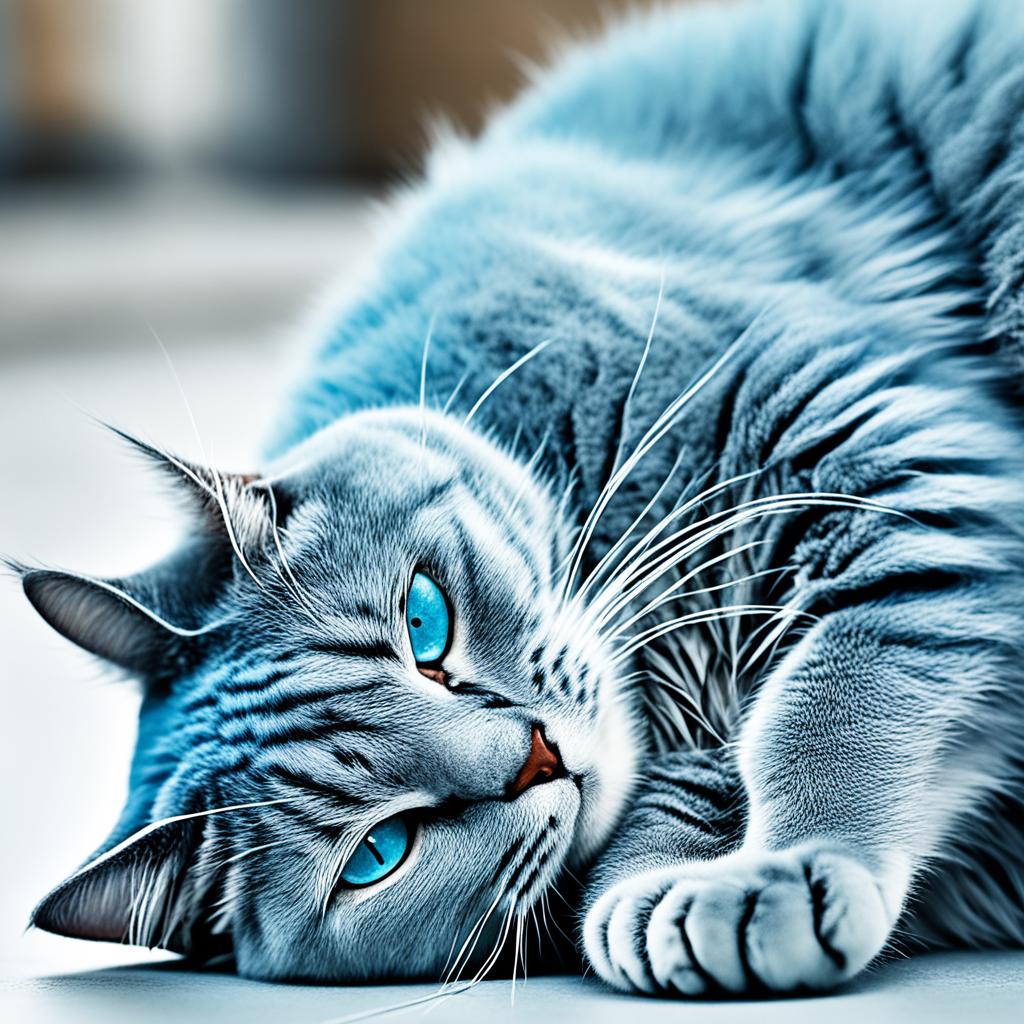
Polycystic Kidney Disease is common in Russian Blue Cats. It’s a genetic disorder needing your attention. It causes kidney cysts, which can harm the organ over time if not found early.
You might notice your cat eating less, acting tired, and drinking a lot more. These are early hints of PKD. Sadly, there’s no cure yet. The best shot is catching it early by working closely with your vet. They may suggest a special diet and other help.
It’s very important to keep up with your cat’s vet visits, especially for Russian Blues. These check-ups let the vet spot and handle any kidney issues fast. This keeps your cat happy and healthy. So, being proactive in checking your cat’s health is key.
| Symptoms | Management Strategies |
|---|---|
| Poor appetite | Special diet |
| Lethargy | Regular activity |
| Increased thirst and urination | Supportive therapies |
Heart Disease in Russian Blue Cats

Heart disease is a big worry for Russian Blue Cats, especially hypertrophic cardiomyopathy (HCM). It’s crucial to keep their hearts healthy. Russian Blues can be more at risk for such problems. So, it’s important to watch for heart issues and know their signs.
Hypertrophic Cardiomyopathy (HCM)
Hypertrophic Cardiomyopathy is common in Russian Blue Cats. It means their heart muscle gets thicker, which can make their heart work less well. Sadly, cats with HCM might not show clear signs at first. This makes it hard to stop early and treat in Russian Blue Cats.
Signs to Look For
Noticing HCM signs takes careful attention. Cats might have less energy, lose weight unexpectedly, or breathe heavily. Because these signs are hard to spot, it’s important to have their heart checked regularly. This helps find any issues early, so they can be managed with the right care.
| Symptom | Description |
|---|---|
| Reduced Energy | Your cat may appear less playful or more lethargic than usual. |
| Weight Loss | Unintentional weight loss even with a consistent appetite. |
| Difficulty Breathing | Noticeable labored breathing or panting often indicates heart issues. |
document.write(table); // Ensuring the table is visually engaging and informative.
Acting early is crucial for HCM in cats. With the right care and changes, you can help your Russian Blue stay healthy. Then, they can enjoy a great life.
Treating a Sick Russian Blue Cat
Helping a sick Russian Blue Cat can be tough but very worthwhile. It’s important to have a plan that fits their health needs perfectly. Making the right dietary adjustments is key, especially for issues like obesity or diabetes.
Health care might need medication or even surgery for serious problems. It’s vital to follow up on their care. This means watching how they’re doing and making sure they’re sticking to their treatment plan. Keep in touch with your vet to tweak the care plan if needed.
- Initial Evaluation: A detailed look by a vet helps find exactly what’s wrong.
- Tailored Treatment Plan: Once the issue is known, treatments can vary from new diets to medical steps.
- Consistent Follow-ups: Keep checking in and making appointments to control the issue.
- Collaborative Decision-Making: Team up with your vet to always pick the best treatment path.
Being the health guardian of a Russian Blue Cat is more than just treating sickness. It’s also about preventing problems. With regular vet visits, the right food, and a fun space, your cat can be happier and healthier. You and your vet make a great team for your Russian Blue Cat’s well-being.
Conclusion
Knowing when your Russian Blue Cat feels under the weather is key. Early health issue recognition is vital for your cat’s health. Regular trips to the vet are important for your pet’s well-being.
Looking after a Russian Blue goes beyond vet check-ups. They need a good diet, a calm home, and plenty of play time. This keeps them from getting overweight and other related problems. Today’s care can keep your cat from getting sick in the future.
Being a great pet owner makes sure your Russian Blue lives a happy, long life. Stay alert for any health worries and act fast if they show any signs of being sick. A healthy Russian Blue Cat is more than a pet, it’s family.




